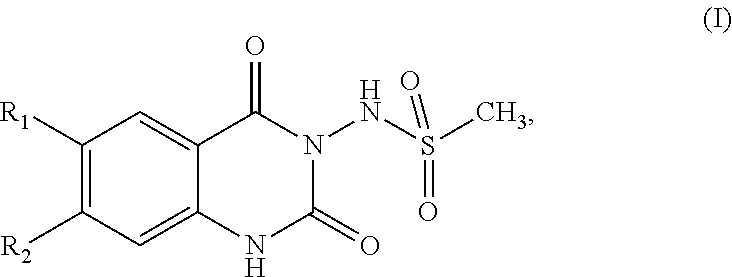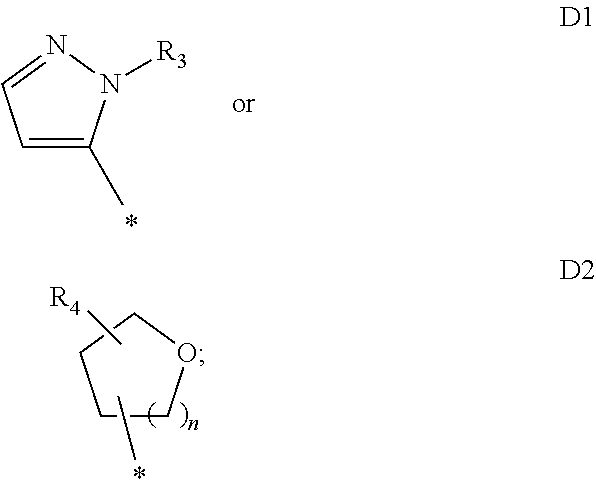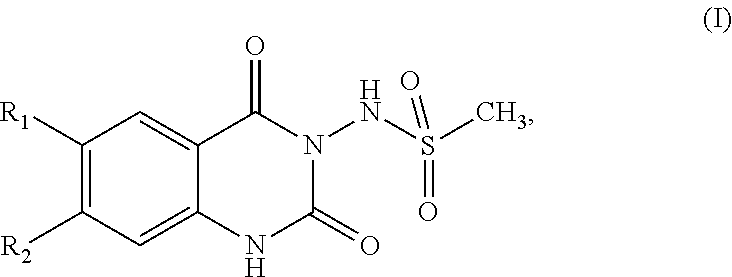Use of 1H-quinazoline-2,4-diones
- Summary
- Abstract
- Description
- Claims
- Application Information
AI Technical Summary
Benefits of technology
Problems solved by technology
Method used
Image
Examples
Embodiment Construction
[0020]The invention relates to a compound, 1H-quinazoline-2,4-diones of formula (I)
[0021]wherein
[0022]R1 is C1-C6alkyl substituted by one, two or three substituents selected from hydroxy, C1-C6alkoxy or C5-C6cycloalkoxy; C5-C6cycloalkyl substituted by one, two or three substituents selected from hydroxy, C1-C6alkoxy or C5-C6cycloalkoxy; or
[0023]R1 is
[0024]R3 is C1-C6alkyl, hydroxy or C1-C6alkoxy-C1-C6alkyl;
[0025]R4 is hydrogen or C1-C6alkyl;
[0026]n is 1 or 2;
[0027]R2 is C1-C3alkyl or C1-C3fluoroalkyl;
[0028]their pharmaceutically acceptable salts, and their prodrugs thereof;
[0029]for use in a method for the treatment, prevention or delay of progression of spasticity.
[0030]The compound of formula (I) is a competitive AMPA antagonist. It is well understood that allosteric (non-competitive) antagonists provide an insurmountable blockade of AMPA receptors, potentially preventing any AMPA receptor-mediated neurotransmission at the synapse. In contrast, a high concentration of glutamate at...
PUM
 Login to View More
Login to View More Abstract
Description
Claims
Application Information
 Login to View More
Login to View More - R&D
- Intellectual Property
- Life Sciences
- Materials
- Tech Scout
- Unparalleled Data Quality
- Higher Quality Content
- 60% Fewer Hallucinations
Browse by: Latest US Patents, China's latest patents, Technical Efficacy Thesaurus, Application Domain, Technology Topic, Popular Technical Reports.
© 2025 PatSnap. All rights reserved.Legal|Privacy policy|Modern Slavery Act Transparency Statement|Sitemap|About US| Contact US: help@patsnap.com



